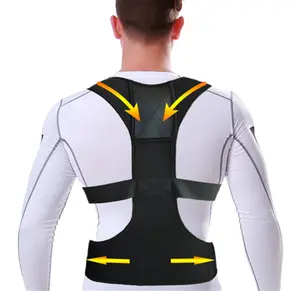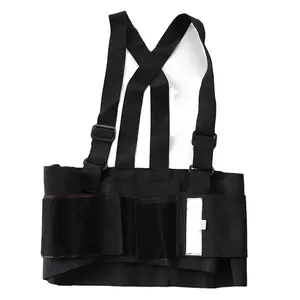Introduction
When it comes to heavy lifting, safety is paramount. A key component of this safety equation is the back brace. Originally designed for medical rehabilitation and weightlifting, back braces have found a significant role in industrial settings, providing essential support to the lower back. This article delves into the intricacies of back braces, their types, proper usage, benefits, and common misconceptions, helping you optimize your lifting capacity while minimizing risk.
Understanding the Mechanics of Lifting
Comprehending the mechanics of lifting is vital to prevent injuries. When you lift and bend at your waist, your back's alignment and your abdomen's center of balance shift. Consequently, your spine must support both your upper body's weight and the load being lifted. The National Institute of Occupational Safety and Health (NIOSH) provides guidelines for safe lifting, including formulas to calculate the Action Limit and Maximum Permissible Load, which are weights that most people can lift safely.
The Role of Back Braces in Heavy Lifting
Industrial back belts, also known as back braces, are commonly used in workplaces to prevent lower back injuries. Initially used in medical rehabilitation and weightlifting, these belts have become popular in industrial settings. The most prevalent style is a lightweight, elastic belt worn around the lower back, sometimes secured with suspenders. However, the effectiveness of back braces in reducing injuries is still a topic of debate, requiring further research for a definitive answer. It's crucial to remember that back braces don't eliminate ergonomic or individual risk factors and should not be the only preventive measure.
Types of Back Braces for Heavy Lifting
Back braces for heavy lifting are primarily categorized into three types: flexible, semi-rigid, and rigid. Flexible braces, made from soft materials like cotton or neoprene, allow limited bending and include corsets, lumbar belts, and sacroiliac belts. Semi-rigid and rigid braces provide more support and stability, with rigid braces often used in severe cases of pain or instability. Rigid braces may incorporate hard plastic or metal bars for additional support. The choice between these types depends on the severity of pain, the level of support needed, and the specific lifting task.
How to Choose the Right Back Brace
Selecting the right back brace depends on your specific condition and lifestyle needs. For general lower back pain, a flexible, elastic brace is recommended. If you're dealing with a herniated disc, a semi-rigid immobilization brace is more suitable. The area of injury should align closely with the center of the brace on your spine for effective stabilization. It's essential to consult with a healthcare professional to confirm your diagnosis and get recommendations for the most suitable back brace.
Proper Use of Back Braces
Correct usage of a back brace is crucial to prevent further injury and increased pain. Most braces are put on following a few general steps, which may require assistance if the back is already in pain. Wearing a shirt under the brace can minimize skin irritation. Regular cleaning of both the brace and the skin can help prevent skin rashes or lesions. Specific washing instructions are usually provided by the brace manufacturer, and should be followed to maintain the brace’s longevity and effectiveness.
Benefits of Using Back Braces
Back braces play a vital role in heavy lifting, offering numerous benefits. They provide support to the lower back, reducing or eliminating discomfort. By supporting vital areas and core muscles of the back and spine, they allow the body to relax and start healing from stress or strain. Back braces are effective in providing relief, whether you have poor posture, a back injury, or are aging. They also aid in improving posture, preventing back pain, and strengthening your core and back. However, it's important to choose the right size and type of back brace for maximum benefits.
Potential Risks and Misconceptions
There are common misconceptions about using back braces. One myth is that they weaken muscles. However, this only happens if you become overly dependent on the brace and neglect physical activity. Another myth is that you'll become reliant on the brace forever. This is not true if you maintain a proper exercise regimen to strengthen your core muscles. It's crucial to follow the exercise program given by your health care practitioner when using a back brace.
Conclusion
In conclusion, back braces play a pivotal role in heavy lifting, providing support, reducing discomfort, and aiding in posture improvement. However, their effectiveness is contingent on choosing the right type and size, proper usage, and maintaining a balanced exercise regimen. While they offer numerous benefits, they should not be seen as a standalone solution for back injury prevention. It's crucial to consult with healthcare professionals for diagnosis and recommendations, and to follow an exercise program to strengthen core muscles. Ultimately, back braces are a valuable tool in the arsenal of heavy lifting, but they are just one part of a comprehensive approach to back health and safety.











































 浙公网安备 33010002000092号
浙公网安备 33010002000092号 浙B2-20120091-4
浙B2-20120091-4